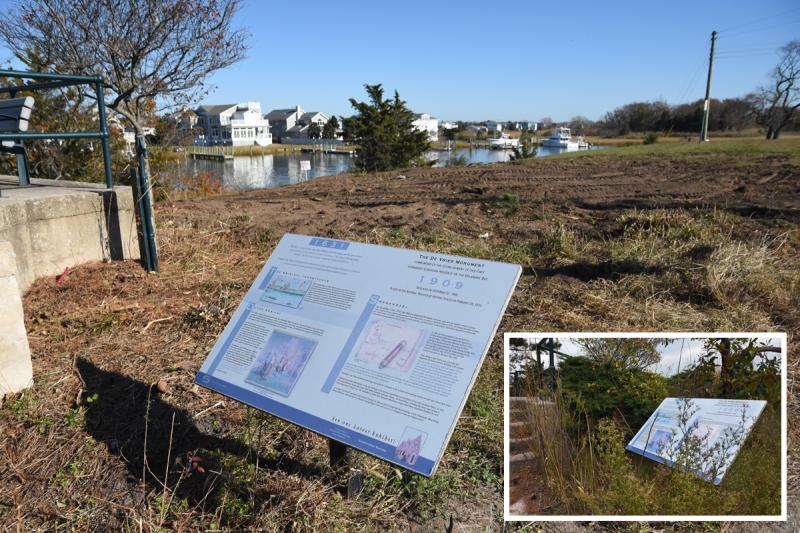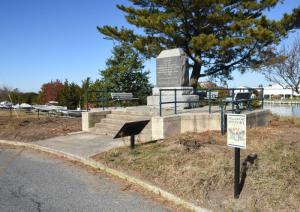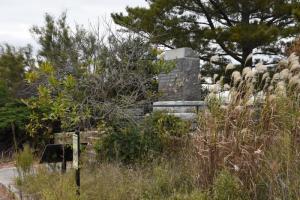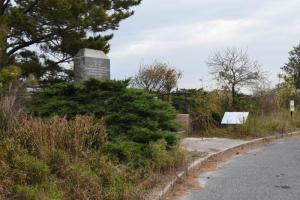Work underway to showcase DeVries Monument in Lewes
For years, a historical marker celebrating the 1631 settlement of modern-day Lewes had been partially obscured behind decades of overgrowth. But work is underway to clean up and enhance the DeVries Monument.
The Lewes marker sits on Pilottown Road at the approximate location of the 1631 Swanendael settlement, the first attempt at settling the Lewes area.
"What happened there ... makes it arguably the most historic place in the state of Delaware," said Russ McCabe, retired state historian and consultant on the project. "If it were not for those 20-some Dutchmen in 1631, there would be no colony nor state of Delaware."
In 1629, agents of the Dutch West India Company voyaged to what is now modern-day Lewes, where they purchased land from Native Americans. A tract was acquired by the Dutch in exchange for cloth, axes, adzes, beads and various other goods. Twenty-eight colonists arrived in 1631 to engage in whaling and farming while also building a fort, a settlement named Swanendael.
A year after the colonists arrived, Dutch Capt. David Pietersen DeVries landed there to find the fort had been burned and the colonists massacred.
Though the settlement was short-lived, its existence laid the cornerstone for Delaware as a colony and later a state. Swanendael served as the southern boundary of New Netherland. After the British took control of New Netherland, the entire province comprising New Castle, Kent and Sussex counties was granted to the Duke of York; in 1682, he granted it to William Penn. But Lord Baltimore of Maryland also claimed ownership of the land.
An eight-decade court battle ensued. Ultimately, a British court determined in 1769 that because Swanendael had been purchased, founded and cultivated prior to any other claim, a compromise settlement must be reached, and it resulted in a new colony, Delaware.
The stone monument on site was erected and dedicated in 1908. Photographs from the dedication show a wide-open terrain. Over the last 100-plus years, trees, shrubs and bushes grew and thickened around the monument. Up until the recent cleanup at the site, overgrowth had nearly obscured the monument from view.
But the cleanup was the first phase of a larger effort to highlight the historical significance of the Swanendael settlement. The project is a partnership between the Department of State Historical and Cultural Affairs, the city of Lewes and the Greater Lewes Foundation. The University of Delaware is also connected to the project, as it owns all of the land surrounding the site.
"Removing the vegetation was a great first step," McCabe said. "It really opens up the viewshed. Now you can walk up to the monument, stand there and look out, and it's not too hard to imagine why that place was such a strategic spot."
Historical documents have confirmed the monument's location as the site of the Swanendael settlement. The site sits higher than most land along the Lewes-Rehoboth Canal, with a view of the entrance to the canal from the Delaware Bay via Roosevelt Inlet.
Mark Chura, a project manager working on behalf of the Greater Lewes Foundation, said later on, work will focus on improving accessibility to the monument, as parking is very limited around the site.
Efforts will also be made to provide better interpretation on site. He said other than the inscription on the monument and a single information board, there isn't much at the DeVries site to illustrate just what happened and its importance to Delaware history.
"It seems like an appropriate time to dust off and really express the significance of this story," he said. "We want to tell the full story of what occurred here and the significance."
The project is still in the early stages. Final planning and fundraising efforts are still further down the road, Chura said.
McCabe said he is happy to see an effort afoot to highlight the historical significance of the DeVries location and make it more visible. He said folks are often underwhelmed when they visit the site, and a more interactive experience may enhance the site.
"I'm happy the Greater Lewes Foundation is brining some attention to it," he said. "I think because it's a little off the beaten path, it's one of those out-of-sight, out-of-mind sites."
Nick Roth is the news editor. He has been with the Cape Gazette since 2012, previously covering town beats in Milton and Lewes. In addition to serving on the editorial board and handling page layout, Nick is responsible for the weekly Delaware History in Photographs feature and enjoys writing stories about the Cape Region’s history. Prior to the Cape Gazette, Nick worked for the Delmarva Media Group, including the Delaware Wave, Delaware Coast Press and Salisbury Daily Times. He also contributed to The News Journal. Originally from Boyertown, Pa., Nick attended Shippensburg University in central Pennsylvania, graduating in 2007 with a bachelor’s degree in journalism. He’s won several MDDC awards during his career for both writing and photography. In his free time, he enjoys golfing, going to the beach with his family and cheering for Philadelphia sports teams.






























































